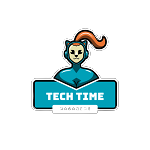“The Subtle Art of Not Leaving a Trace”
“Gone Without a Hint”
These can be excellent titles for the book containing the nightmare of every human resource executive, i.e., candidate ghosting. Like the dating world, the sudden disappearance of once-interested candidates creates frustration among recruiters in the tech industry.
Candidate Ghosting
Despite investing time and resources, candidates “sign out” of a recruitment process after rounds of screening and interview process without informing the recruiter. In fact, according to Indeed, 28% of job seekers have ghosted a recruiter in the middle of the hiring process. The worst part is that 57% of employers are now the victims of employee ghosting more than ever.
So, What Should Be The Course of Action For Tech Employers And Recruitment Not To Fall Prey To The Modern Ghosting Trend?
With these strategies, you can minimize the occurrences of candidate ghosting without resource and time wastage:
1. No More Communication Gaps:
You’ve found the perfect candidate whose profile description matches your offered full-stack engineer position’s requirements. But, before you can schedule a final call, the candidate vanishes and stops responding to emails.
One of the possible explanations for such behavior is the lack of clear and concise communication between the parties. According to Clutch Report 2018, 23% of the candidates resort to ghosting because of not hearing from the company. Not providing any clarity about proceeding with your company’s hiring routine can turn even the most patient of prospective employees away.
With an overwhelming inflow of job seeker applications, it’s not easy to communicate individually with each candidate. That’s why automating your hiring process through software integration can prove miraculous. Such incorporation can also help with the increase in efficiency through decreased manual time spent.
2. No More Puzzling Job Descriptions:
According to Eightfold AI, unclear job descriptions are one of the significant reasons for one-fifth of employees losing interest in jobs.
Nowadays, job seekers are not merely looking for a fat check but also want enhancement in their current skillset through contribution to a company. Around 70% of the seekers are looking for a clear understanding of their roles and responsibilities in the hiring process itself. In addition, they also require an inclusive company culture that supports their long-term and short-term goals.
For this reason, it’s imperative for hiring professionals to provide concise job descriptions which offer insights into how the applicants will aid in the company’s growth. One of the easiest ways to ensure the same is by including the relevant details in the position outline. In fact, you can enhance the response rate on your listing with out-of-the-box tech job descriptions like the director of cloud migration.
3. No More Restricting On Conventional Hiring Processes:
A standard recruitment drive is less interactive and, therefore, less engaging for the applicants. To win the talent war, recruiters must keep the curiosity of job seekers heightened throughout the hiring process.
Feeding the applicants’ curiosity is imperative for hiring managers to ensure easy delivery of the brand culture. In addition, it also personalizes the overall recruitment drive to ensure the company fitness of the job seekers. Such incorporation enables the candidates to perceive value, empathy, and convenience with the company, lowering dropout rates.
Moreover, with the growing demand by the tech sector, the facilitation of transparency and prompt communication from the traditional recruitment channels can prove to be an extremely costly affair.
4. No More Workflow Without A Recruitment Pipeline:
From background checks to advertising the position availability, hiring an employee itself comes with recruitment expenditure that can cost around USD 3500. The investment isn’t merely restricted to monetary expenses but also includes time and effort. However, with a good referral recruitment pipeline, tech businesses can not only save the crucial company budget but also hire suitable employees.
According to Linkedin, it takes about 60 days for a company to acquire talent through traditional routes. At the same time, with a proper referral program in the recruitment pipeline, the duration minimizes to 30-45 days.
In addition, a referred employee is more likely to stay with the company than a candidate sourced from regular means. According to JobVite, 46% percent of hired candidates remained with a company for more than a year, as against 33% of individuals hired traditionally.
The best part? Referral rewards keep your existing employees’ morale up too!
5. No More Employer Ghosting Too:
Candidate Ghosting – As excruciating as it is for you to never hear a word from your would-be employee, the feeling is mutual for the candidates you involve in the process. That’s to say, if you never want to be ghosted, it’s mandatory that you create an employee-centric culture, or more precisely, a standard for the tech industry.
With such employment of a process, you can not only propagate an ideal that enables existing job seekers to trust your process but also fosters credibility in the long run. Doing this will also enable you to create a steady flow of talent into your recruitment pipeline for future roles as well.
Using standard software integration in your recruitment regime, you can fix the response duration for higher procedural transparency.
In A Nutshell:
With the unprecedented growth of tech professionals‘ requirements, the recruitment process needs to be straightforward and efficient. The reason for the same is that innovation in the industry is leading to competition for acquiring the right talent at the right time. The hiring managers can’t afford to lose a candidate because of the inefficiency of the recruitment system anymore.
That’s why it’s crucial for companies to keep an eye on their entire process to weed out the discrepancies. Moreover, the future of recruitment isn’t limited to employee onboarding but also expands to assist with their future goals.
With automation in the hiring regimen, recruiters can capture the right talent and do the same within the company budget. Additionally, it also enables the human resources managers to keep track of both the current employees and the prospects alike. That’s to say, fostering an inclusive company culture is now an easily navigable opportunity with software usage.

